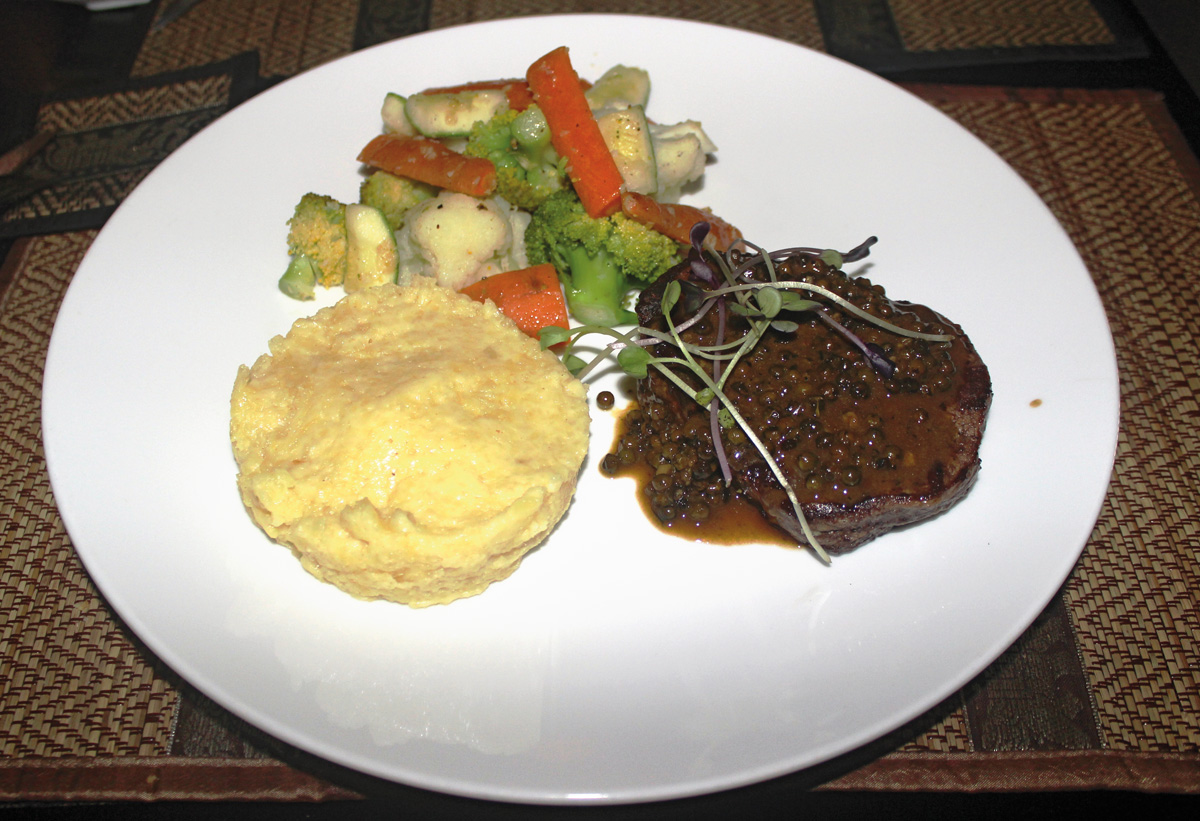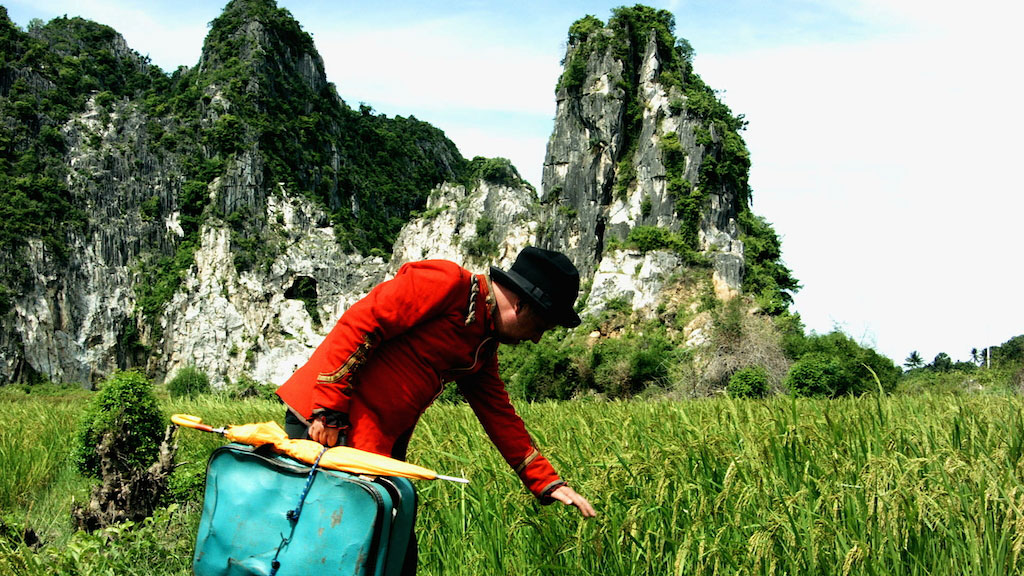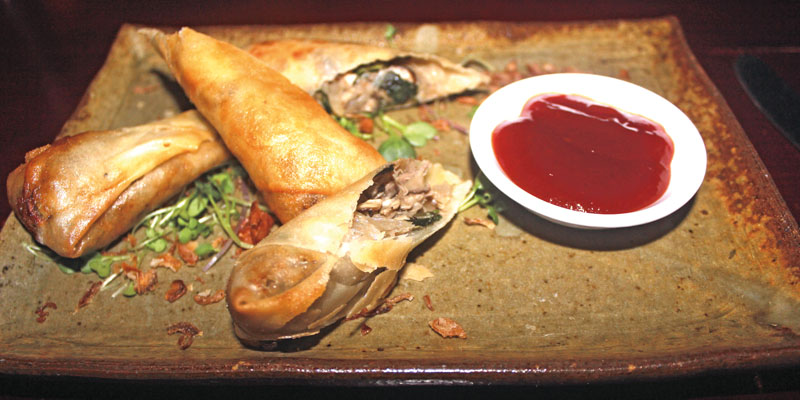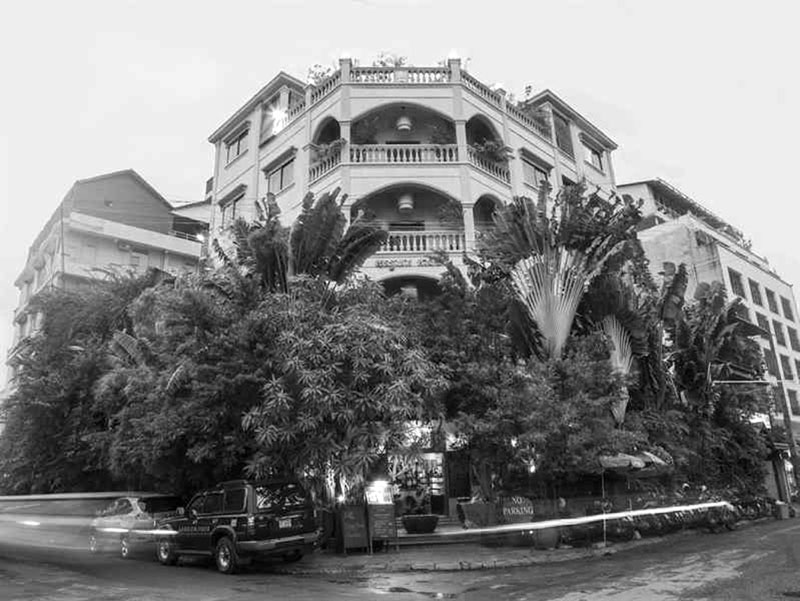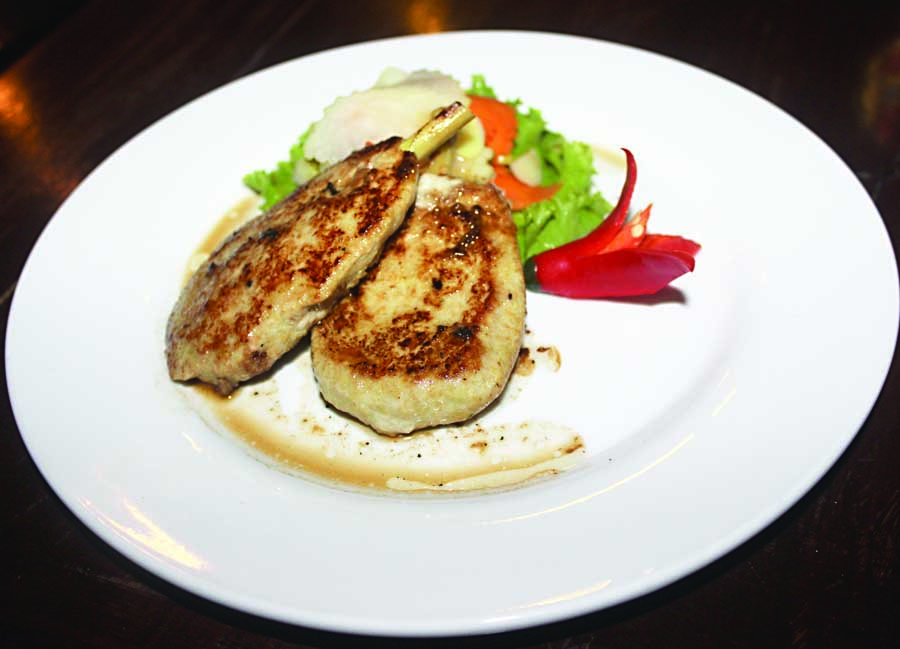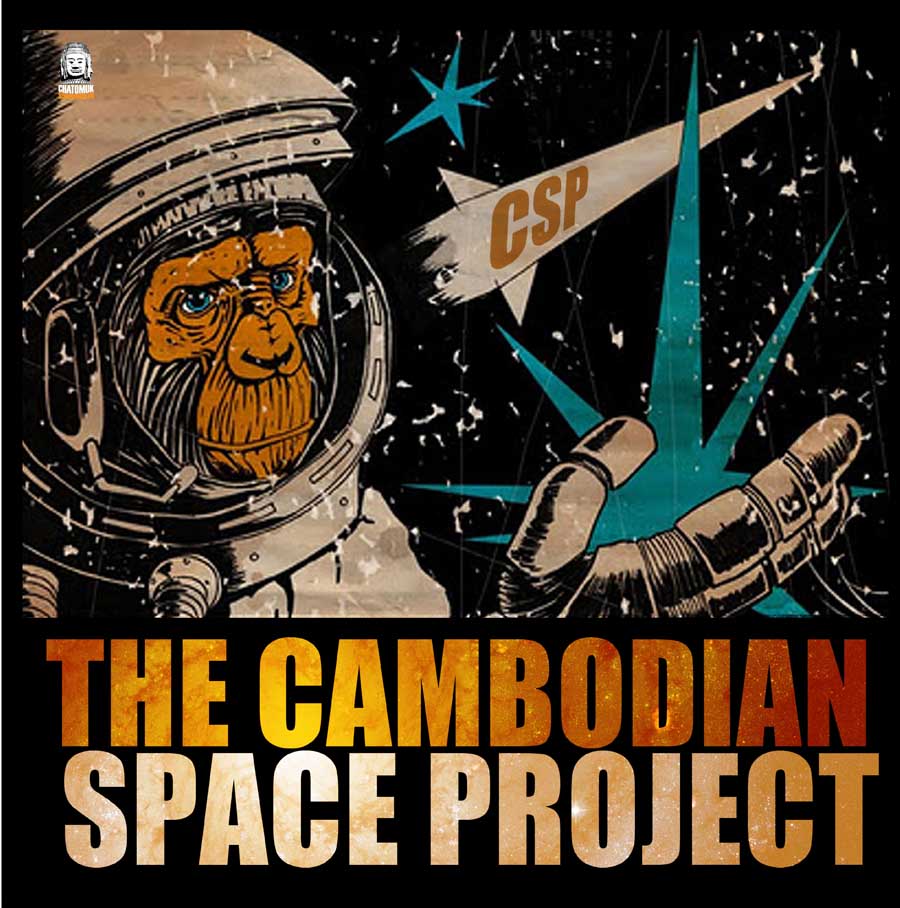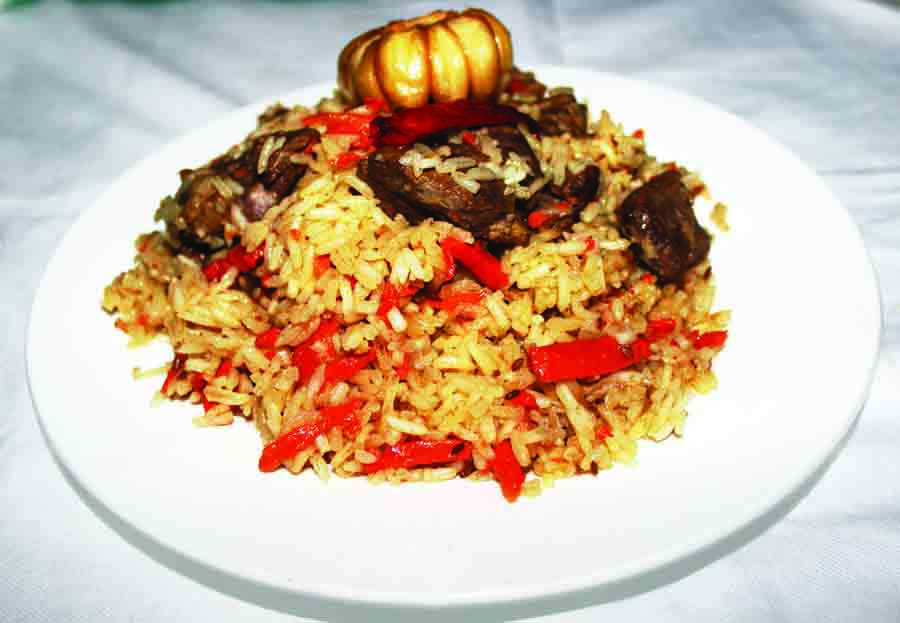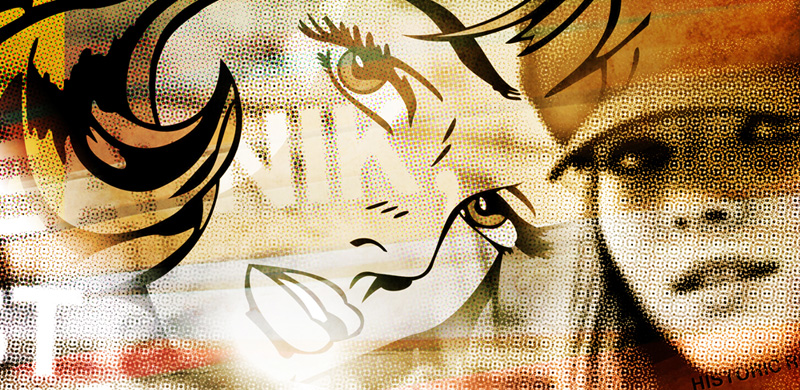Propping up an authentic Irish bar in a dusty corner of Sihanoukville is perhaps the last place you’d expect to find one of the cornerstones of the worldwide Beat Generation fan base, or indeed a renowned expert on the life of William Burroughs, but that’s exactly where David S Wills – author, managing editor of Beatdom magazine and owner of a publishing house by the same name – has made his home for the past year. To date, he’s authored controversial novel The Dog Farm, which is set in the seedy world of ESL teaching in South Korea; and Scientologist! William S. Burroughs and the ‘Weird Cult’, which examines the role of Scientology in the life of an American literary giant. And all this just as Kill Your Darlings, in which a 1944 murder brings together the great Beat poets, with Daniel Radcliffe playing Allen Ginsberg, screens at The Flicks. The Advisor caught up with David over a couple of essential cold ones to hear his own version of being on the road, his thoughts on alternative literature and the place of the Beat Generation in modern society.
What brought you to Cambodia?
I could give a romantic answer and say that travelling is in my blood because my dad has worked worldwide and visited over 100 countries, but the reality is that I’d graduated with a degree in English literature and there were just no jobs in Scotland. One evening I was having a drunken conversation with a friend and they mentioned working in Korea. Despite knowing nothing about the countries beyond Park Ji Sung and Kim Jong Il, I went home and sent out around 70 CVs. By the next morning I had a job offer and two weeks later I was in South Korea where I stayed for three years. From there I went to Taiwan; hated it and ended up fleeing in the middle of the night after two weeks when the work became unbearable. I ended up in Malaysia for a further two weeks till I got a call offering me a lecturing post in China where I was teaching Australian history; something I knew nothing about and was only ever one chapter ahead of the students.
I’ve heard a few anecdotes from your travels, but there was one from China that really stood out.
You probably mean the wedding story. A Westerner in China is still very much a novelty outside of the main areas and you get asked – and paid – to do all manner of strange jobs or favours, from joining their football team to masquerading as a mining executive in their office. But the strangest one, especially given my non-religious nature, was being asked to officiate at the wedding in Hefei of the CEO of the Howard Johnson hotel chain in China. There were 600 guests and it was a complete nightmare. I’m not confident in front of crowds and initially said no, but they were persistent and offered me $1,000 and as much as I could eat and drink. The free drink was there before the wedding and by the time it came to start the ceremony I was pretty damned drunk and managed to stumble through some Chinglish downloaded from the internet. Added to that, the band they’d supposedly flown in from Germany turned out to be Austrian and proceeded to drunkenly pull down all the German flags after the wedding. All in all, a very entertaining evening.
How did you get hooked on the beat generation?
I’d always had an interest in books and had read vociferously from an early age. I then started writing when at university but never shared it with anyone other than one or two close friends. One of those said my writing reminded me of Hunter S Thompson’s Fear And Loathing In Las Vegas and gave it to me to read. From there I moved onto Kerouac, other Beats and general ‘50s and ’60s literature. Burroughs and Ginsberg came much later, but became my primary interests. The literature side had a huge influence on the culture of the time.
Bob Dylan cites Kerouac as a primary influence and there was very much that ‘50s post-war rebelliousness in a lot of the writing. I then started up Beatdom while still living in Dundee and expanding the fanzine to a publishing imprint seemed like a logical step forward.
You recently wrote about the parallels between the Beat generation and the Alt Lit scene, meeting with mixed responses from fans of the genre.
I stand by my original points. Though lumping authors together under a banner is mostly done as a matter of convenience in studying literature, I think that more so than in other cases there are a lot of similarities. They were basically sets of urban hipsters with literary inclinations, both taking inspiration from the past while radically redefining literature to the extent of asking what literature is. Kerouac, Ginsberg and Burroughs’ most famous works were all derided as being ‘not really literature’ and yet here we are, decades later, with them on university syllabi. I think the internet is a massive part of modern life and yet it hasn’t adequately made its way into art yet. It’s been dominating our existence for more than a decade and yet only now are we really seeing artists make the internet itself ‘art’. Alt Lit involves both the incorporation of Gmail chats and Tweets into literature, but it also makes blogs and YouTube videos and screen macros into literary works. It’s fascinating how important this is and yet how overlooked.
I do see a parallel between internet-fuelled jargon in Alt Lit and the work of Kerouac and Burroughs. Kerouac took jazz and made it the rhythm of his novels, and they’re taking the way people actually communicate now and making it part of literature.
I spoke with [American novelist] Noah Cicero about the similarities and he said that Alt Lit was like the Beats and other movements in that it was about living “the literary life”. In other words, a writer is not necessarily a professional writer. He or she does things that are different from other people and makes that part of their work. They explore the world, physically or psychically. I think that is true of him but probably not other Alt Lit writers.
Alt Lit is similar to the Beats in that it’s a sort of social thing in some ways, probably more so than a stylistic or political or any other kind of movement. You’re Alt Lit if you know someone who’s Alt Lit, basically. People are classified as part of it through their friendships with the likes of [US novelist, poet and essayist] Tao Lin and [US poet] Steve Roggenbuck.
If someone wanted to start delving into Alt Lit, what would you recommend?
Tao Lin is the obvious starting point. He’s considered the ‘Father of Alt Lit’ because people have copied him stylistically. Many of the other best Alt Lit writers have different styles, whereas Lin is like Kerouac in that he has thousands of imitators. Pretenders, if you will. He’s not a particularly easy writer to get into and so I’m not sure if he’s a good entry level one. What most people don’t get is that he’s funny. I didn’t get it at first, not for a long time. He seemed annoying. Then I saw him read (on YouTube, not an actual live performance) and he couldn’t stop laughing (he was on MDMA) and I realised that he was a comedic writer. He wasn’t nihilistic like people said, but rather he was having fun with the meaninglessness of life for his generation.
Beyond him there are lots of decent Alt Lit writers; Megan Boyle is my favourite. She’s a good starting point, too. She was Tao Lin’s wife, briefly, and they made films together. She did a live blog of her life, racking up the same sort of millions of words that Kerouac did. She spares no detail, which is like Ginsberg, too. The sheer openness of it is stunning. She’s also funny. Her Tweets and column (for Vice) and blog are all very funny.
Steve Roggenbuck is also good, but you have to know when you go in that he’s pretending to be dumb. He spells everything intentionally wrong as homage to Orlovsky and Stein. Noah Cicero is an easier read in many ways. Sam Pink is also very popular.
What next from Beatdom magazine? Any forthcoming releases that excite you? And what’s next for you?
I’m editing five books at the moment. Four of them are for publication through Beatdom Books. One is by John Tytell, who wrote one of the first ever books about the Beat Generation – Naked Angels. Another is a memoir of a friend of Allen Ginsberg, who shares their unpublished correspondence, and also several unpublished Ginsberg poems. We also have a weird book about William S. Burroughs that’s illustrated. I don’t even know how to describe it. And there’s a novella by Tony J Rodriguez, which is one of the best things I’ve read in ages. His book is basically an update of On The Road, but with a female protagonist. It’s a brilliant book, unlike the millions of wannabe On The Road knock-offs I see.
What about me? If I ever find the time, I’ll get around to writing my book on Alt Lit. I want it to be the first ever book about Alt Lit, but if I don’t get around to it then it’ll be the second. Or third.
WHO: The Beat Generation
WHAT: Kill Your Darlings screening
WHERE: Flicks1, St. 95 and Flicks2, St. 136
WHEN: 6:30pm June 20 & 22; 4pm June 23; 8:30pm June 24 (Flicks1 only); 6:30pm June 25 (Flicks1 only)
WHY: The beat goes on!
